A zoetrope is a device to create an optical illusion of movement out of still pictures. A cylinder is set vertically so it can spin. Along the inside are individual pictures, and the cylinder walls are pierced by slits. As the cylinder spins, your eye catches glimpses of the pictures inside in quick succession, and your brain strings these together into a moving image. The early predecessors of the zoetrope go back almost a couple of millenia, but the modern zoetrope was invented about two centuries ago. Improvement and related devices led over the course of the 1800s led to the motion picture projector, and today's movie theaters, which work on pretty much the same principle. This LEGO zoetrope by 62bricks was inspired by an earlier creation by Lego Tron.
Friday, September 23, 2011
Wednesday, September 21, 2011
Radioactive waste disposal
Leaving aside the possibility of a horrible accident, like Chernobyl or Fukushima, nuclear power is a great way to generate power. (we could certainly argue about how the once-every-twenty-years possibility of a major even compares to the much less flashy but much more prevalent accidents due to coal or other technologies). The radioactive waste repository (here by Corioso) addresses the biggest problem with nuclear power (and with nuclear medicine and other uses) - what to do with the waste. A substance is radioactive when it is made up of atoms with unstable nuclei. An unstable nucleus will break down over time, emitting small particles and energy. This radiation can cause damage to other molecules (notably important biomolecules in living systems) by knocking away electrons. If this happens to DNA, for instance, this can lead to damage or breakdown of the DNA, leading to things like cell death and cancer. Some radioactive substances will be dangerous for many many years, even centuries, and so the waste is buried deep underground in stable geologic formations.
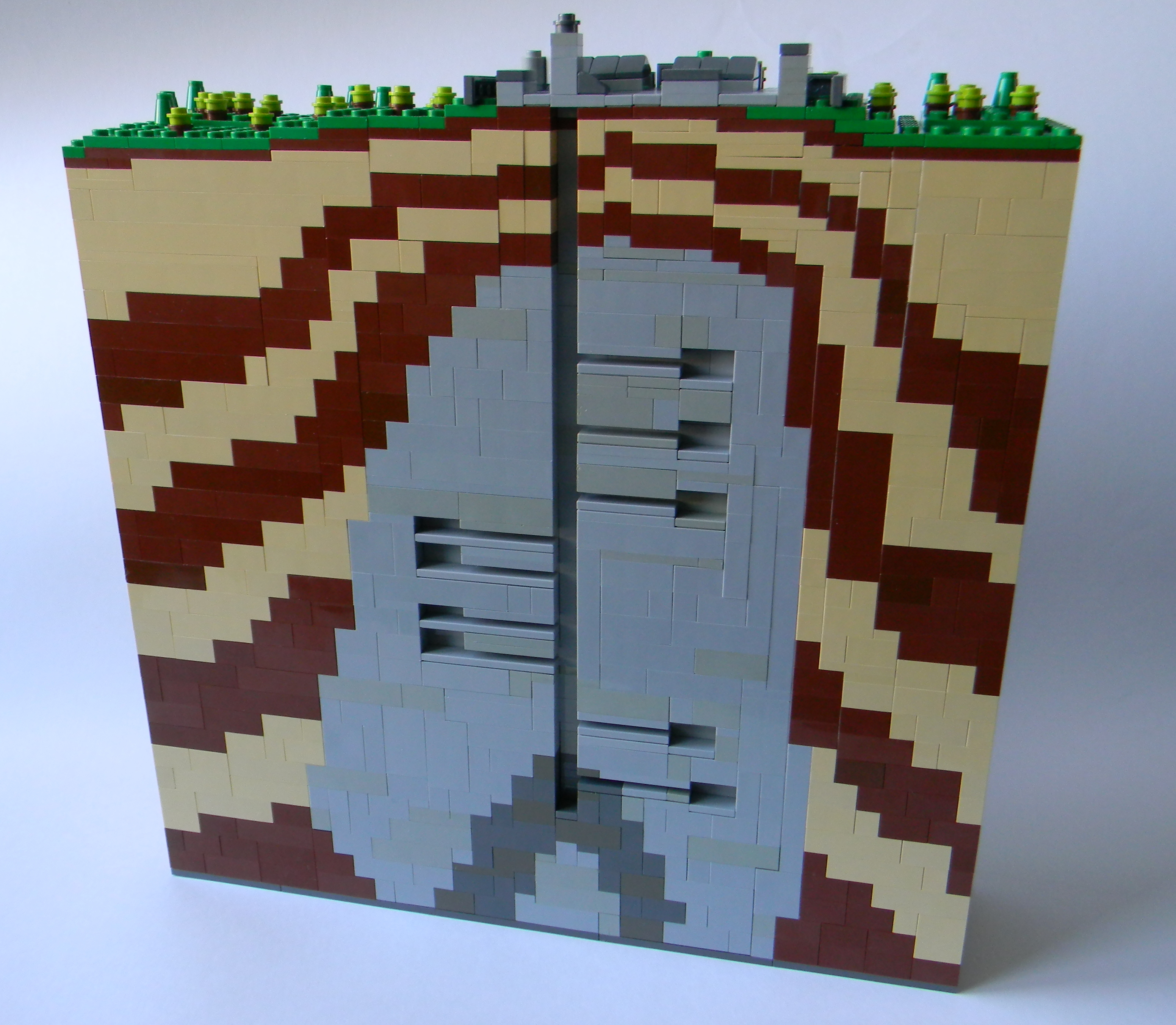

Monday, September 19, 2011
Sextant
Matt Armstrong is doing a series of inventions and made this beautiful sextant. This instrument was first developed in 1757, and is used for measuring the angle between two distant objects - most importantly the horizon and a star. This can be used to calculate a ship's latitude, and was extremely important in helping ships navigate across oceans.
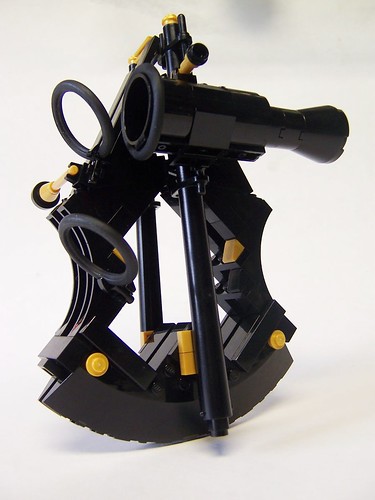

Wednesday, September 7, 2011
Student office
First up in my look back at my chemistry grad school MOC is the student office. When you're in grad school, this is basically your home. You work here, you entertain yourself by surfing the web, you eat the dinner that you grabbed in the student center at your desk so you can check your reaction every ten minutes, sometimes you even sleep here. Ah, the glamorous life of the grad student.
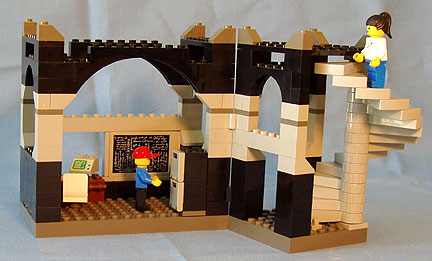

Tuesday, September 6, 2011
Chemistry Graduate School
About ten years ago I made a Chemistry Graduate School for my then-girlfriend-now-wife, who is also a chemist. I put this together like it was a line of small modular sets based on the design of the old Harry Potter sets (e.g. see Snape's Class and the Forbidden Corridor).
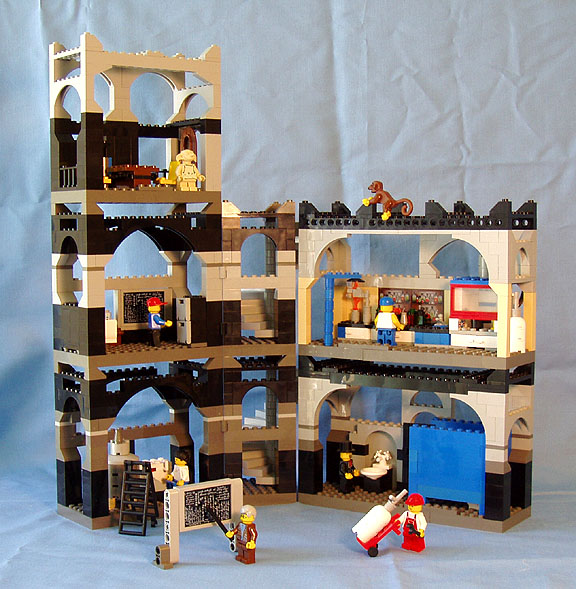

Friday, September 2, 2011
Albert Einstein
Around the turn of the last century it was believed that physics was pretty much a closed book, that Newtonian physics explained it all. Then in 1905 a humble patent inspector named Albert Einstein published four key papers based simply on sitting at his desk and thinking that revolutionized the face of science. To take one, "On a Heuristic Viewpoint Concerning the Production and Transformation of Light" (the basis for his 1921 Nobel prize) looks at a phenomenon that had not been explained before that point, the fact that electrons are ejected from a surface when you irradiate it with an appropriate wavelength of light. Einstein suggested that light could be described as both a wave and as discrete particles. This wave/particle duality forms one of the key elements of quantum mechanics. He realized that when you deal with very small amounts of energy, you find that it is quantized - that is, you cannot break it down into smaller units (just like matter can be broken down into smallest units). His other studies went on to revolutionize our understanding of matter, energy, gravity, magnetism, light, and the nature of space itself. It's no surprise that he has become the face of science and genius, and this huge bust can be found in Legoland Germany (there's a similar bust at Legoland California, and probably the other Legolands as well).
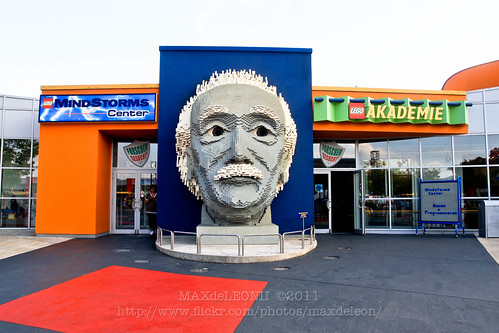

Subscribe to:
Comments (Atom)